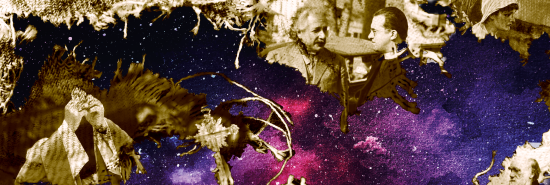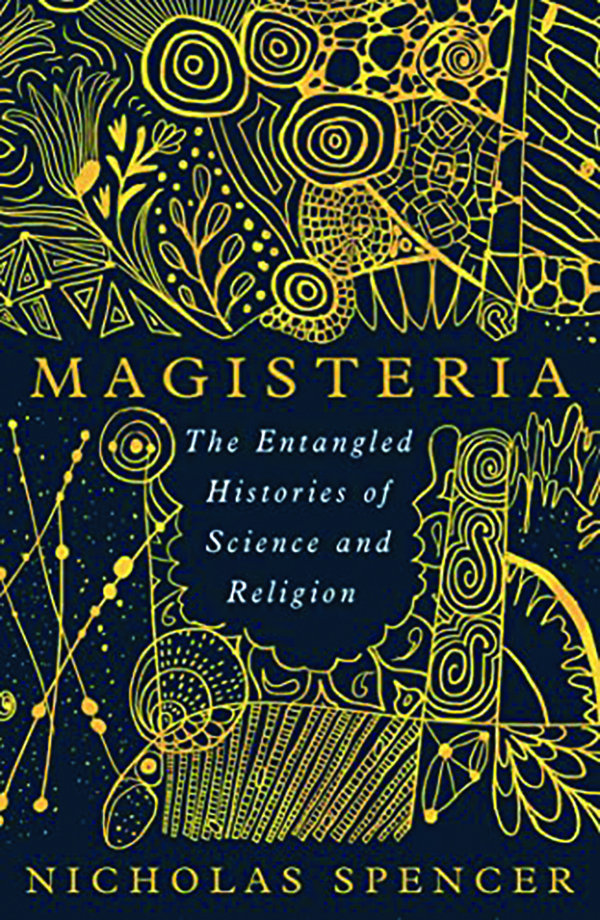
The history of the failure to separate science and religion
Varad Mehta
Hatfields and McCoys. Montagues and Capulets. Cats and dogs. Yankees and Red Sox. These are a few of the most famous feuds in history. None, however, has had the civilizational consequences of the one between science and religion. Their mortal enmity is proverbial.

It’s also largely, albeit not entirely, apocryphal. Far from being at each other’s throats, for much of history, science and religion have coexisted not only amicably but often arm in arm. That’s not how their connection is usually understood. But in Magisteria: The Entangled Histories of Science and Religion, Nicholas Spencer’s well-written, wide-ranging, balanced, and informative survey of their fraught but fruitful relationship from antiquity to the present day, the author argues persuasively that it should be.
NETFLIX’S JUUL DOCUSERIES BIG VAPE IS A FAIRER THAN USUAL LOOK AT AN ISSUE AMERICA GOT DEAD WRONG
Spencer’s title derives from the paleontologist and historian of science Stephen Jay Gould, who proposed in the late 1990s that science and religion are “non-overlapping magisteria,” that is, in Spencer’s words, “distinct fields of human activity that need not — should not — encroach on each other’s territory.” While a noble attempt at a truce when war “between fundamentalists who disbelieved Darwin and fundamentalists who disbelieved anything that wasn’t Darwin” was at its hottest, Gould’s effort couldn’t have worked. Separating science and religion is impossible because they’ve been “entangled” for just about as long as either has existed.
The reason for this, Spencer explains, is that throughout history, they have repeatedly converged on two questions: Who or what counts as a human? And who gets to decide? Despite acrimonious disputes about their respective answers, during much of the past, science and religion were not the implacable foes of popular imagination but friendly rivals, even collaborators. Especially in the centuries before they took on their modern guises, “religion acted as midwife to science.”
To reveal the true picture, Spencer has to remove the layers of myth and misinformation that have accumulated atop it. Therefore, he spends a lot of time playing myth-buster, trying to shatter several hoary legends that have led to the misconception of the relationship between science and religion as one of unceasing hostility.
Thus, we learn the female philosopher and astronomer Hypatia was not a sacrifice made by reactionary religious authorities seeking to extirpate the last vestiges of pagan learning but the unfortunate victim of sectarian strife in fifth-century A.D. Alexandria. Copernicus’s revolutionary hypothesis was warmly welcomed for its mathematical innovation and elegance, with little concern raised about its radical cosmology. Galileo, science’s most famous martyr, fell afoul not of the church’s quest to stamp out heliocentrism but the contemporary intellectual stresses on the church from the Reformation and internecine debates about the continuing role of Aristotle as its preeminent intellectual authority. These and other episodes were turned into examples of religion’s benighted ignorance and antipathy to science long after the fact, at a time when the two did seem to be in genuine conflict.
To portray them as eternally at war, Spencer contends, is anachronistic in two ways. One is that at the beginning, it’s impossible to talk about the fight between science and religion because science and religion as distinct entities didn’t exist. The other is that, as Spencer observes throughout, their relationship was a friendly one. Too friendly, as “one of the biggest problems has been too much harmony rather than too much disagreement” between them. Down the ages, religion has often sought to cloak itself in the mantle of science, only to find the garment rent when the science of the day changed.
Science’s constant transformations did little to discourage the attempt to gain its blessing. Catholics and Protestants alike claimed paternity for modern science and could both point to figures who played a role in its birth. Having been incubated by theology, science now “returned the favor.” Scientists, as Spencer puts it, “deployed their new discoveries in the service of religion” by making various attempts to ground the truths of religion in the latest scientific breakthroughs. The most prominent was physicotheology, better known as “natural religion,” which argued for the existence of God from observation of the natural world.
Physicotheology thrived in England until the 19th century, when the double blows of Darwinism and the revelation of the true age of the Earth by the nascent science of geology tore the edifice down. With Earth eons older than believed, the story of man was no longer synonymous with the story of creation. “Humans were diminished, as, by implication, was the God in whose image they were made.” If by this time science was displacing the religious understanding of Earth’s history, it was also taking on some of the trappings of religion itself. The French philosopher Auguste Comte — erecting in the 1830s the foundations of what would become sociology (the same time geology was being established as a scientific discipline) — proposed a theory for the development of human thought in which the advent of positivism, as he labeled his doctrine of entirely empirical, fact-based knowledge, would mark the culmination of history. This was a vision tinged with religious overtones, specifically those of eschatology, the branch of theology concerned with man’s destiny and the end of time. “Only his was a resolutely secular, scientific kind of eschatology.”
One of the valuable aspects of Spencer’s study is the amount of attention he devotes to events, ideas, and people who, like Comte, don’t feature in the traditional narrative of the relationship between science and religion. While geology’s impact on religion in the 19th century is well known, Spencer claims provocatively that phrenology proved “a far greater flashpoint” between them, something we’ve forgotten because phrenology has long been discredited as a pseudoscience. There are useful discussions of the place of science in pre-modern Jewish and Islamic societies, as well as, later on, the spread of Western science under European colonialism and the ways it “could undermine, or challenge, or stimulate, or reinvigorate the non-Christian religious traditions with which it came into contact.” By diverting his gaze periodically to other faiths, Spencer rightfully reminds his readers that Christianity isn’t the only religion science has had a relationship with.
That relationship, Spencer emphasizes, was not the antagonistic one of legend. Nonetheless, there were times when it did become overtly hostile. The medieval golden age of Islamic science did come to an end because religious authorities squeezed secular learning until it no longer had sufficient institutional resources to sustain itself. Pope Pius IX, striving to hold back the tides of evolution, secularism, and materialism, did issue the infamous “Syllabus of Errors,” which condemned an array of modern ideas, in 1864.
It was against this backdrop that the British-born American chemist John William Draper published History of the Conflict Between Religion and Science (1874), followed two years later by Cornell University co-founder Andrew White’s The Warfare of Science. Far from describing a state of affairs that had existed since time immemorial, Draper and White’s books were, in essence, anti-Catholic propaganda. Very successful propaganda, for ever since, the sempiternal conflict of science and religion has been treated as holy writ.
In the 20th century, as in centuries prior, that battle was marked as often by ceasefires as it was shooting. Religious skeptics raised hackles when Georges Lemaître proposed an explanation of the origins of the universe (the Big Bang Theory) suspiciously aligned with the biblical account of creation, but otherwise, the new physics that arose at the turn of the 1900s did little to arouse the ire of the faithful, largely because it “had a limited amount to say about the nature of the human.” Indeed, the devout were as likely now to be found on science’s side as they were God’s. Hence, while in the USSR, science “appropriated religious language and ideas to legitimize itself” after World War II, “so American fundamentalism dressed up in the language of science to do the same.” To secure their authority, “science and religion effectively swapped clothes.”
Swapped they may have been, but the costumes were the same. Science and religion conflict because on the question of the human, they “most clearly do overlap.” If they are overlapping magisteria, then, it is because “they overlap within us” that their relationship will likely remain contentious.
CLICK HERE TO READ MORE FROM THE WASHINGTON EXAMINER
Varad Mehta is a writer and historian. He lives in the Philadelphia area. Find him on Twitter @varadmehta.
